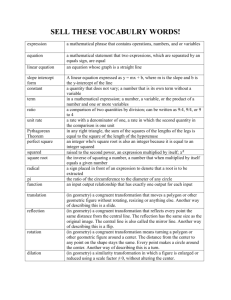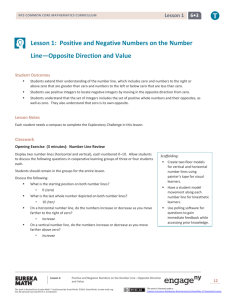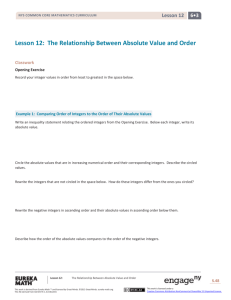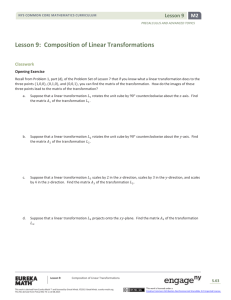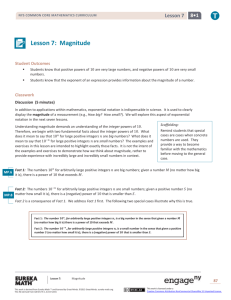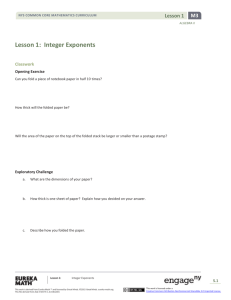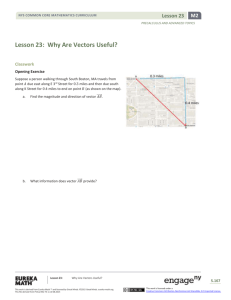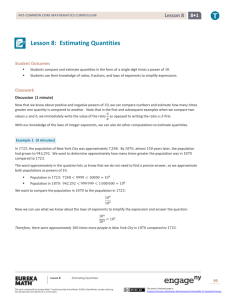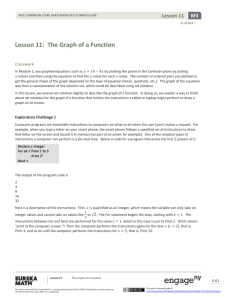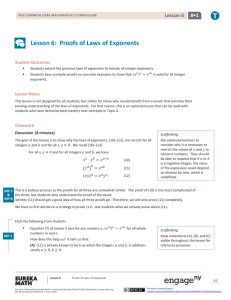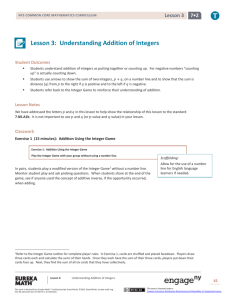Lesson 3: Which Real Number Functions Define a Linear
advertisement
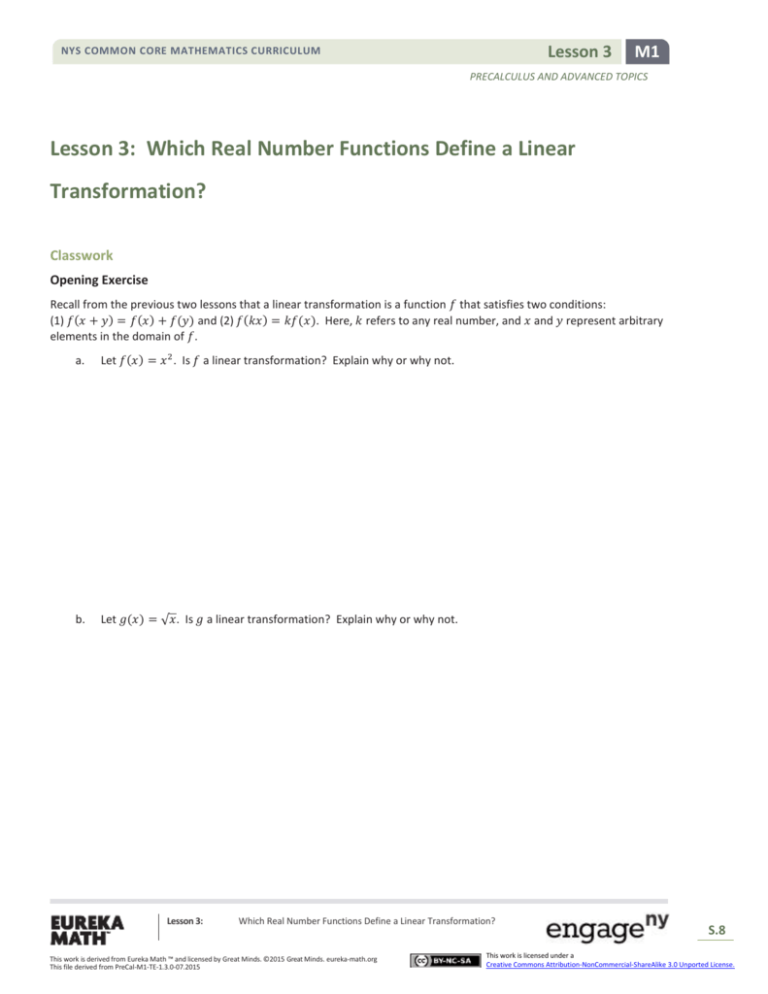
Lesson 3 NYS COMMON CORE MATHEMATICS CURRICULUM M1 PRECALCULUS AND ADVANCED TOPICS Lesson 3: Which Real Number Functions Define a Linear Transformation? Classwork Opening Exercise Recall from the previous two lessons that a linear transformation is a function 𝑓 that satisfies two conditions: (1) 𝑓(𝑥 + 𝑦) = 𝑓(𝑥) + 𝑓(𝑦) and (2) 𝑓(𝑘𝑥) = 𝑘𝑓(𝑥). Here, 𝑘 refers to any real number, and 𝑥 and 𝑦 represent arbitrary elements in the domain of 𝑓. a. Let 𝑓(𝑥) = 𝑥 2 . Is 𝑓 a linear transformation? Explain why or why not. b. Let 𝑔(𝑥) = √𝑥. Is 𝑔 a linear transformation? Explain why or why not. Lesson 3: Which Real Number Functions Define a Linear Transformation? This work is derived from Eureka Math ™ and licensed by Great Minds. ©2015 Great Minds. eureka-math.org This file derived from PreCal-M1-TE-1.3.0-07.2015 S.8 This work is licensed under a Creative Commons Attribution-NonCommercial-ShareAlike 3.0 Unported License. Lesson 3 NYS COMMON CORE MATHEMATICS CURRICULUM M1 PRECALCULUS AND ADVANCED TOPICS Problem Set 1. 2. 3. Suppose you have a linear transformation 𝑓: ℝ → ℝ, where 𝑓(2) = 1 and 𝑓(4) = 2. a. Use the addition property to compute 𝑓(6), 𝑓(8), 𝑓(10), and 𝑓(12). b. Find 𝑓(20), 𝑓(24), and 𝑓(30). Show your work. c. Find 𝑓(−2), 𝑓(−4), and 𝑓(−8). Show your work. d. Find a formula for 𝑓(𝑥). e. Draw the graph of the function 𝑓(𝑥). The symbol ℤ represents the set of integers, and so 𝑔: ℤ → ℤ represents a function that takes integers as inputs and produces integers as outputs. Suppose that a function 𝑔: ℤ → ℤ satisfies 𝑔(𝑎 + 𝑏) = 𝑔(𝑎) + 𝑔(𝑏) for all integers 𝑎 and 𝑏. Is there necessarily an integer 𝑘 such that 𝑔(𝑛) = 𝑘𝑛 for all integer inputs 𝑛? a. Let 𝑘 = 𝑔(1). Compute 𝑔(2) and 𝑔(3). b. Let 𝑛 be any positive integer. Compute 𝑔(𝑛). c. Now, consider 𝑔(0). Since 𝑔(0) = 𝑔(0 + 0), what can you conclude about 𝑔(0)? d. Lastly, use the fact that 𝑔(𝑛 + −𝑛) = 𝑔(0) to learn something about 𝑔(−𝑛), where 𝑛 is any positive integer. e. Use your work above to prove that 𝑔(𝑛) = 𝑘𝑛 for every integer 𝑛. Be sure to consider the fact that 𝑛 could be positive, negative, or 0. In the following problems, be sure to consider all kinds of functions: polynomial, rational, trigonometric, exponential, logarithmic, etc. a. Give an example of a function 𝑓: ℝ → ℝ that satisfies 𝑓(𝑥 ∙ 𝑦) = 𝑓(𝑥) + 𝑓(𝑦). b. Give an example of a function 𝑔: ℝ → ℝ that satisfies 𝑔(𝑥 + 𝑦) = 𝑔(𝑥) ∙ 𝑔(𝑦). c. Give an example of a function ℎ: ℝ → ℝ that satisfies ℎ(𝑥 ∙ 𝑦) = ℎ(𝑥) ∙ ℎ(𝑦). Lesson 3: Which Real Number Functions Define a Linear Transformation? This work is derived from Eureka Math ™ and licensed by Great Minds. ©2015 Great Minds. eureka-math.org This file derived from PreCal-M1-TE-1.3.0-07.2015 S.9 This work is licensed under a Creative Commons Attribution-NonCommercial-ShareAlike 3.0 Unported License.









